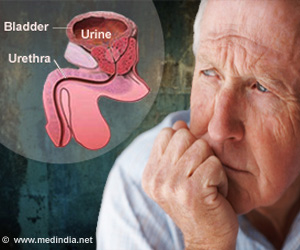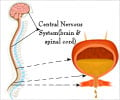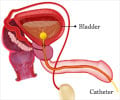Till date, no effective treatment is reported for post-prostatectomy urine incontinence in males.
Collagen injections and similar periurethral bulking agents have been used widely for incontinence but due to migration and absorption of these agents, their use is restricted.These injections are more effective in women than in men.
In females, a medication called duloxetine is known to increase resting urethral pressure and subsequently decreases urine incontinence.
The first line of treatment for early incontinence experienced in first 6-12 months post prostatectomy is pelvic floor muscle exercise and non-invasive therapies.
Interventions in lifestyle and pharmacotherapy are also effective controlling urine incontinence. However in 10 percent patient, incontinence is reported for more than a year postoperatively. In such patients, surgery is advised.
In 1973, the first artificial urinary sphincter was invented. Depending upon the requirements, researches have been going on to develop better implants. The old AUS 800 are now outdated but still widely used. Recently discovered devices are developed to overcome the disadvantages of AUS 800.
Recently four devices have been developed that are devoid of disadvantages associated with the previous devices.
It is adjustable device filled with saline without contrast, therefore can be monitored by ultrasound scan.
The precise location of the device and the integrity of device’s components can be evaluated by MRI.
Knight and colleagues have reported the effectiveness of FlowSecure in 9 male patients aged between 60-66 years. They were followed for twelve months and they recuperated quite well after surgery.
The Periurethral Constrictor (PUC) was formulated primarily for pediatric patients with deficient bladder sphincter function. It was designed by Dr. Fabio Vilar in the year 1996.
Periurethral Constrictor consists of a constrictor cuff linked by a silicone tube to a valve. The cuff is placed around the bladder neck or the urethra. The pressure in the cuff is controlled by fluid injected through the valve. Simone et al conducted a study on 43 patients with mild urinary incontinence. PUC was implanted following prostatectomy. Amazing results were reported with success rates being 86% and complications such as hematoma, erosion, malfunctioning and infection were noticed in 6 patients. Studies by Lima et al did not produce so good results.
More research is required to establish the efficacy and safety of the device. Low cost and simplicity are the factors in support of PUC implantation.
The ZSI 375 is an artificial sphincter developed by ZEPHYR Surgical Implants, a Swiss-French Company. Dr. Christophe Gomez-Llorens and Raphael Gomez-Llorens in 2005 invented this device. ZSI 375 is used exclusively in men and treats severe incontinence.
The Tape Mechanical Occlusive Device (GT Urological, Minneapolis, MN) is another useful artificial sphincter device. It applies circumferential pressure on urethral sphincter and is easy to use.
This device has an on/off button that makes it extremely easy to use. So far it has been tried and tested in canines and clinical trials in humans are still to follow.
Reference:
New Artificial Urinary Sphincter Devices in the Treatment of Male Iatrogenic Incontinence; Ioannis et al; Advances in Urology; Volume 2012 (2012), Article ID 439372
Source-Medindia














